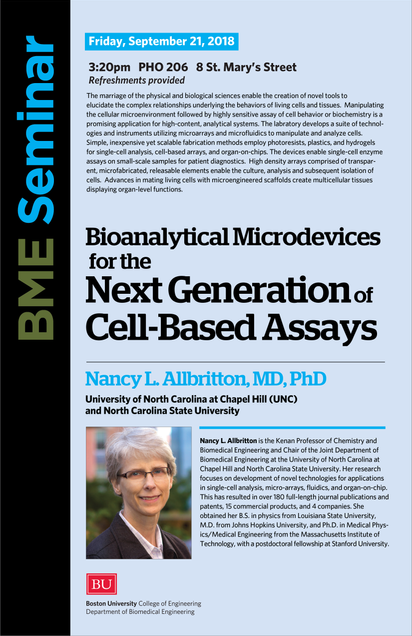Allbritton Lecture – BME 9-21
The marriage of the physical and biological sciences enable the creation of novel tools to elucidate the complex relationships underlying the behaviors of living cells and tissues. Manipulating the cellular microenvironment followed by highly sensitive assay of cell behavior or biochemistry is a promising application for high-content, analytical systems. The labratory develops a suite of technologies and instruments utilizing microarrays and microfluidics to manipulate and analyze cells. Simple, inexpensive yet scalable fabrication methods employ photoresists, plastics, and hydrogels for single-cell analysis, cell-based arrays, and organ-on-chips. The devices enable single-cell enzyme assays on small-scale samples for patient diagnostics. High density arrays comprised of transparent, microfabricated, releasable elements enable the culture, analysis and subsequent isolation of cells. Advances in mating living cells with microengineered scaffolds create multicellular tissues displaying organ-level functions.
Nancy L. Allbritton is the Kenan Professor of Chemistry and Biomedical Engineering and Chair of the Joint Department of Biomedical Engineering at the University of North Carolina at Chapel Hill and North Carolina State University. Her research focuses on development of novel technologies for applications in single-cell analysis, micro-arrays, fluidics, and organ-on-chip. This has resulted in over 180 full-length journal publications and patents, 15 commercial products, and 4 companies. She obtained her B.S. in physics from Louisiana State University, M.D. from Johns Hopkins University, and Ph.D. in Medical Physics/Medical Engineering from the Massachusetts Institute of Technology, with a postdoctoral fellowship at Stanford University.
